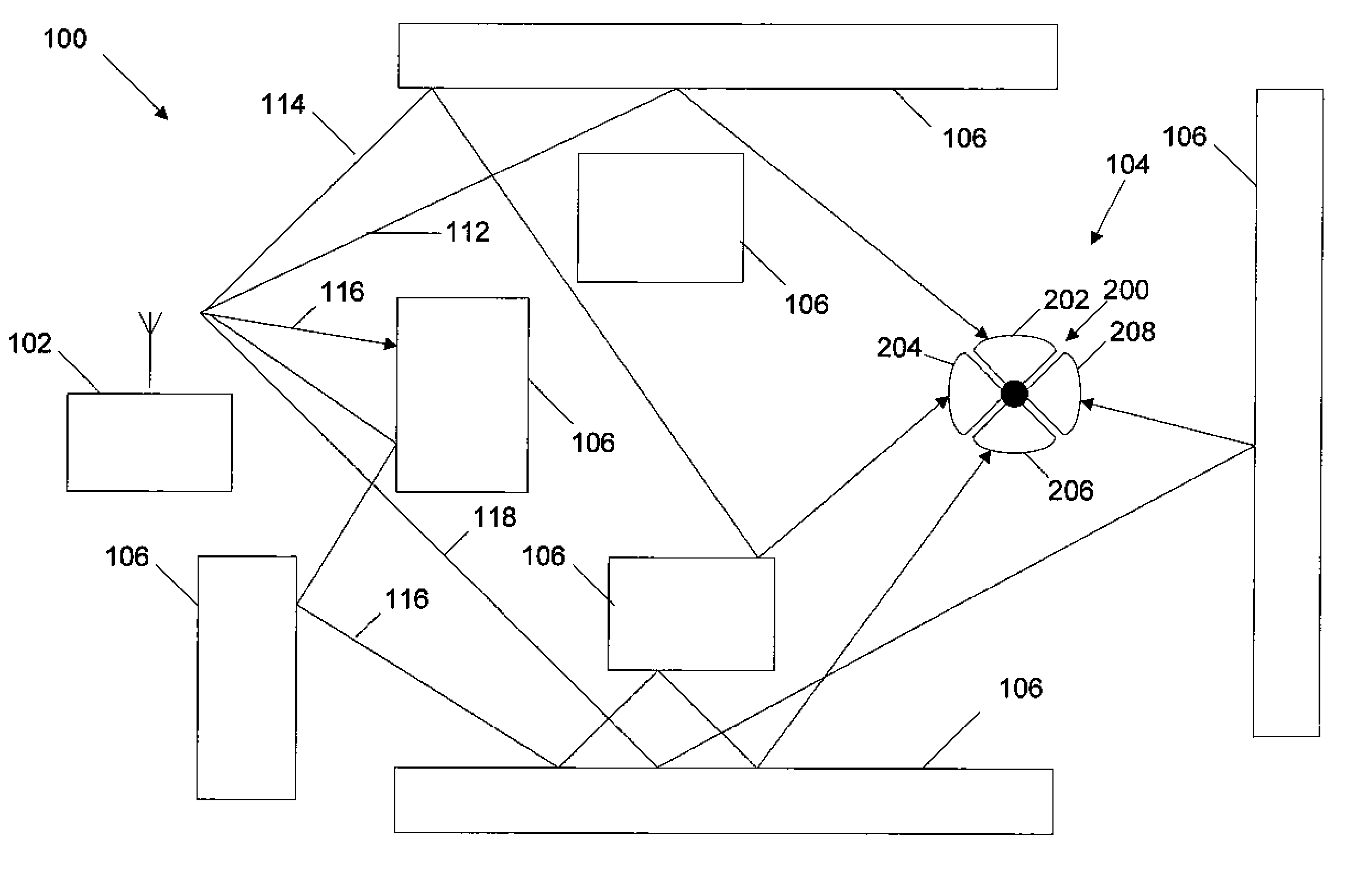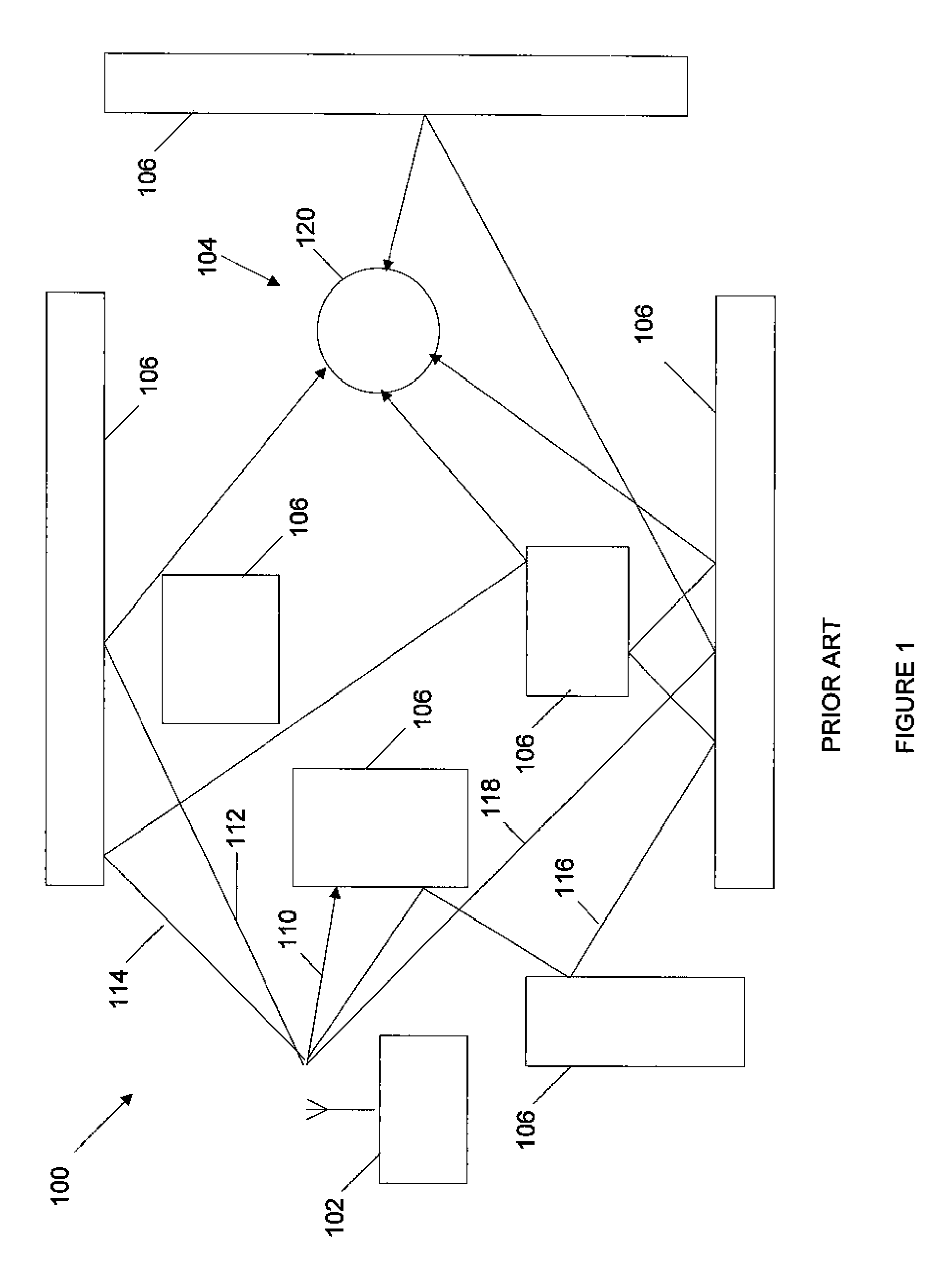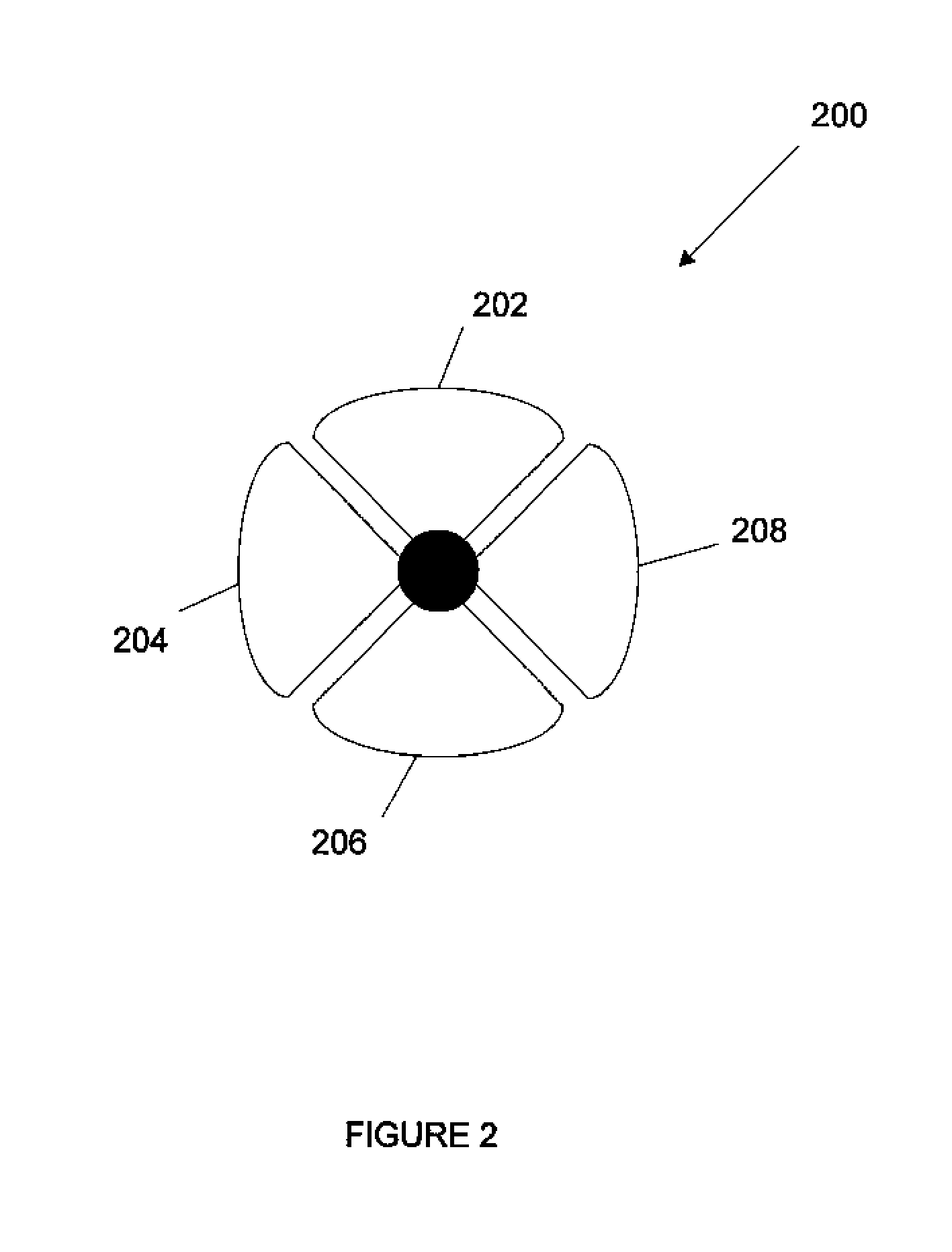Self-installable switchable antenna
a switchable antenna and self-installation technology, applied in the direction of antennas, transmission, wireless communication, etc., can solve the problems of insufficient reception signal, change the location of obstacles relative to receivers or transmitters, and move in the environment, so as to optimize the diversity of antenna systems and increase system gain. , the effect of optimizing spatial diversity
- Summary
- Abstract
- Description
- Claims
- Application Information
AI Technical Summary
Benefits of technology
Problems solved by technology
Method used
Image
Examples
Embodiment Construction
” one will understand how the features of the system and methods provide several advantages over traditional framing techniques.
[0013] In accordance with the invention, it is desirable to optimize an antenna system diversity in Non Line-of-Sight (NLOS) or Obstructed Line-of-Sight (OLOS) propagation environments when two or more receive antennas are employed. In other words, it is desirable to optimize spatial diversity for systems that employ one or more antenna feeds that are operating in heavy multipath fading environments. It is also desirable to provide characteristics of omni-directional antenna coverage in NLOS or OLOS environments while also increasing the system gain. The system is self-installable in customer premises equipment (CPE) or Subscriber Station (SS), especially in NLOS environments where a direct antenna alignment is not possible by optical means. The system is also adaptive to support antenna alignment for time-varying NLOS or OLOS propagation environments.
[001...
PUM
 Login to View More
Login to View More Abstract
Description
Claims
Application Information
 Login to View More
Login to View More - R&D
- Intellectual Property
- Life Sciences
- Materials
- Tech Scout
- Unparalleled Data Quality
- Higher Quality Content
- 60% Fewer Hallucinations
Browse by: Latest US Patents, China's latest patents, Technical Efficacy Thesaurus, Application Domain, Technology Topic, Popular Technical Reports.
© 2025 PatSnap. All rights reserved.Legal|Privacy policy|Modern Slavery Act Transparency Statement|Sitemap|About US| Contact US: help@patsnap.com



